In The Court of Miracles, you and your guild are poor beggars who face off against each other using trickery and opportunism to build up and take over Paris in the 16th century. This is a bluffing, worker placement game with area majority elements. The gameplay is pretty simple, but knowing the right time when and where to place your different workers will either cause an increase in renown, or find you looking up to all the other growing guilds around you. The game is designed by Vincent Brugeas, a first time designer who done an excellent job for his first game. Lucky Duck Games is the publisher, a company known for having published Small Islands, Destinies, and Chronicles of Crime and will soon be publishing Divinus. So, stay with me as I review The Court of Miracles.
What’s in the Box?
- 1 Castle playing board
- 1 Cloth bag
- 32 Rogue tokens of different strengths
- 5 Player cards
- 24 Plot cards
- 30 Renown tokens (6 of 5 different colors)
- 20 Player tokens (4 of 5 different colors)
- 1 Penniless King token
- 64 Coin tokens
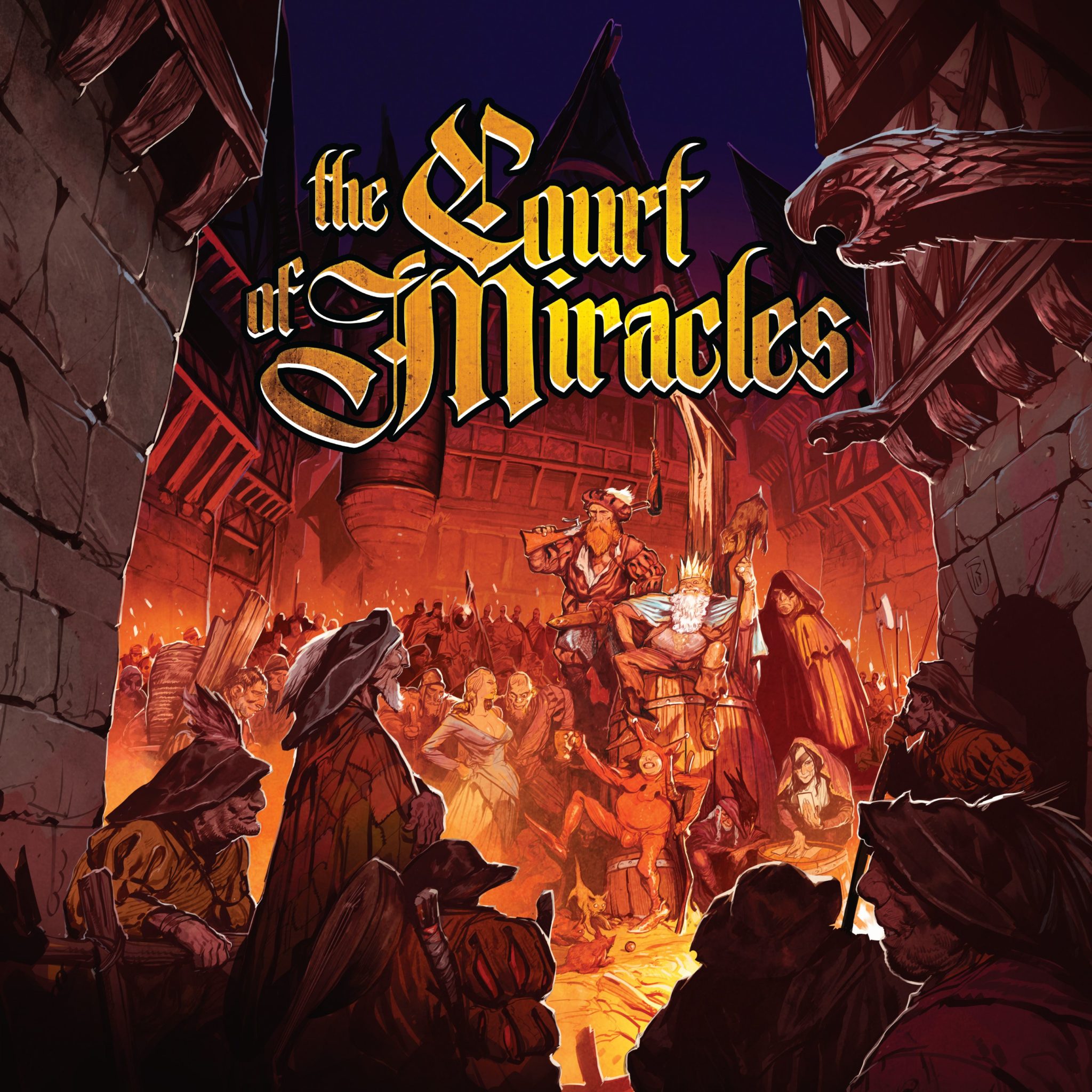
How’s it play?
To begin, everyone starts with a player card matching their guild, 6 renown tokens placed on top of that card, 1 randomly dealt out plot card, 4 rogue tokens (2 henchmen, 1 right-hand, and 1 beggar), and 4 player tokens of their color. Player tokens are used to place on top of your rogue tokens to identify them as yours. As the game progresses, you might get different rogue tokens, in whcih case you would put one of your player tokens on top of the new rogue token. Everyone will place their right hand rogue to the side of the board in the renown square, which can be earned later.
The Penniless King token is placed on the first space of the track. The game will be timed with this token because when it gets to the end of the line, the game will end.
The first player starts the game, and the subsequent players will receive an amount of coins depending on how far they are away from the start player. The object of the game is to place all 6 of your renown tokens on the game board, either in the neighborhoods or at the Renown Square. The first player to do that wins the game.
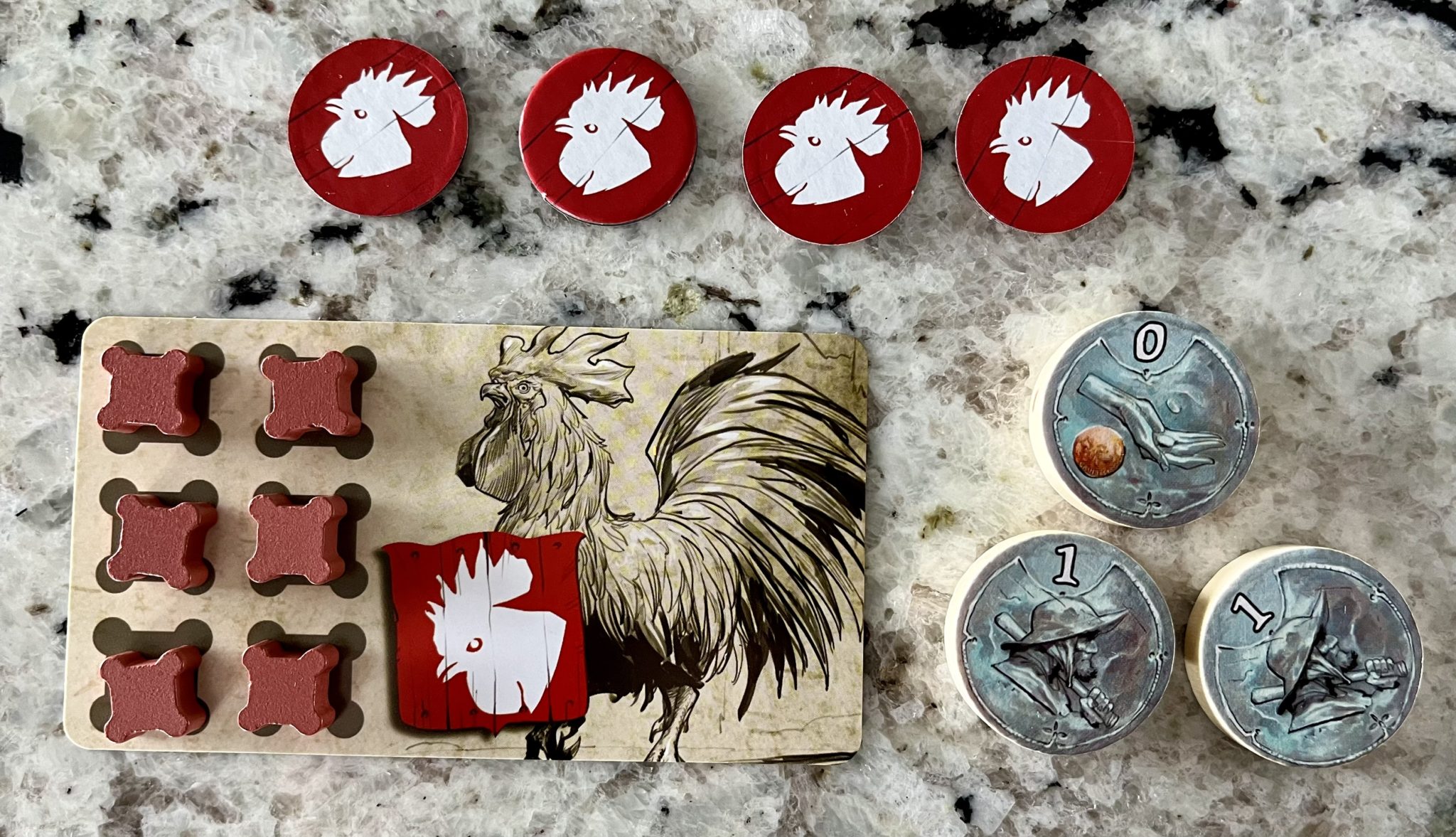
Play continues in a clockwise order, and on your turn, you place one of your rogue tokens on the board. If it covers up an effect, you apply that effect immediately. Effects can either move the Penniless King forward, let you gain coins, or let you draw plot cards. After you take the effect from the specific spot, you then take the action from the selected neighborhood.
Each of the 5 neighborhoods let you do something different, like draw a new rogue token from the bag, move someone else’s rogue token from one spot to another, pay a toll to place a renown token on an open spot in the Renown Square, or gain coins or plot cards.
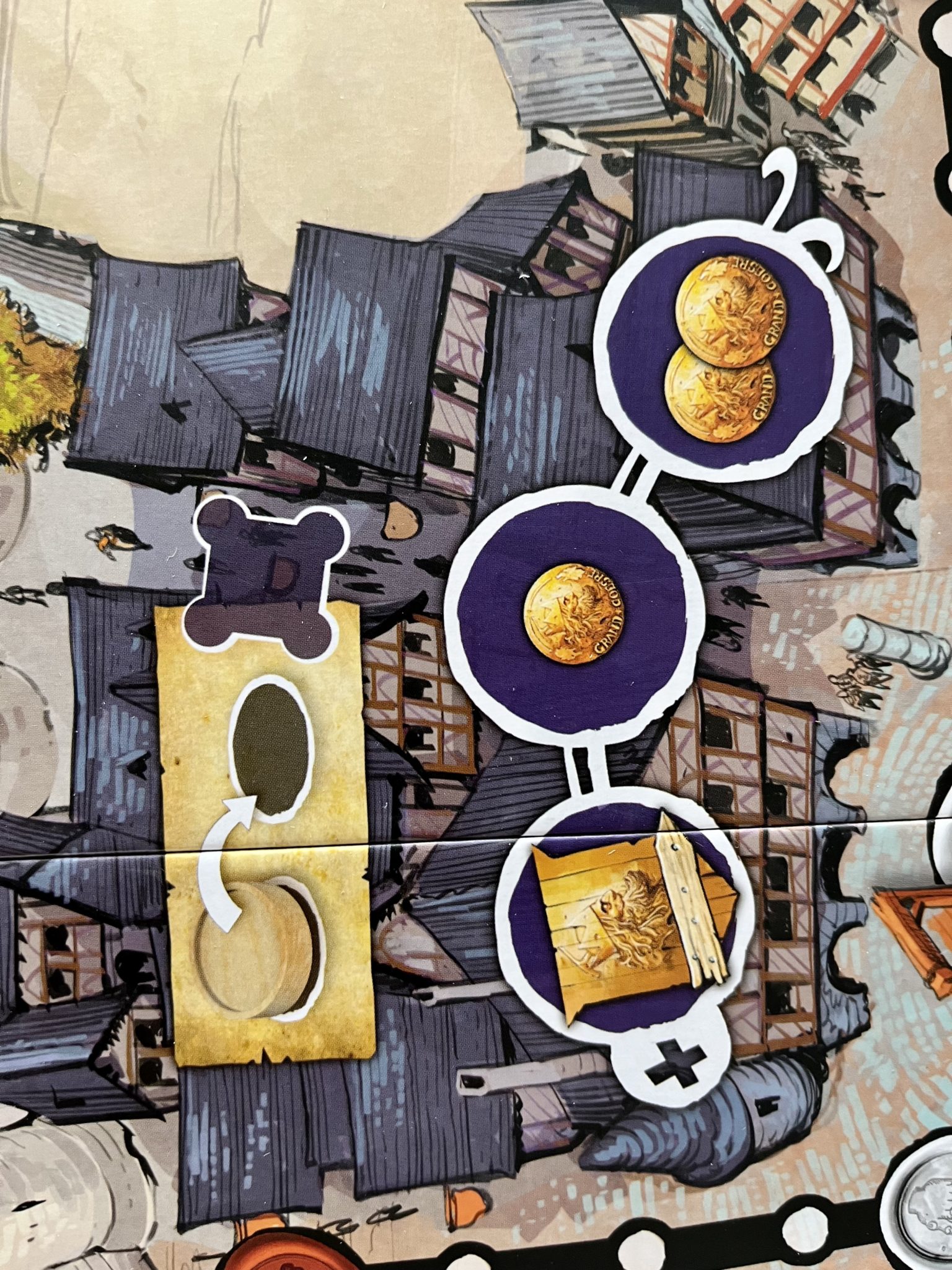
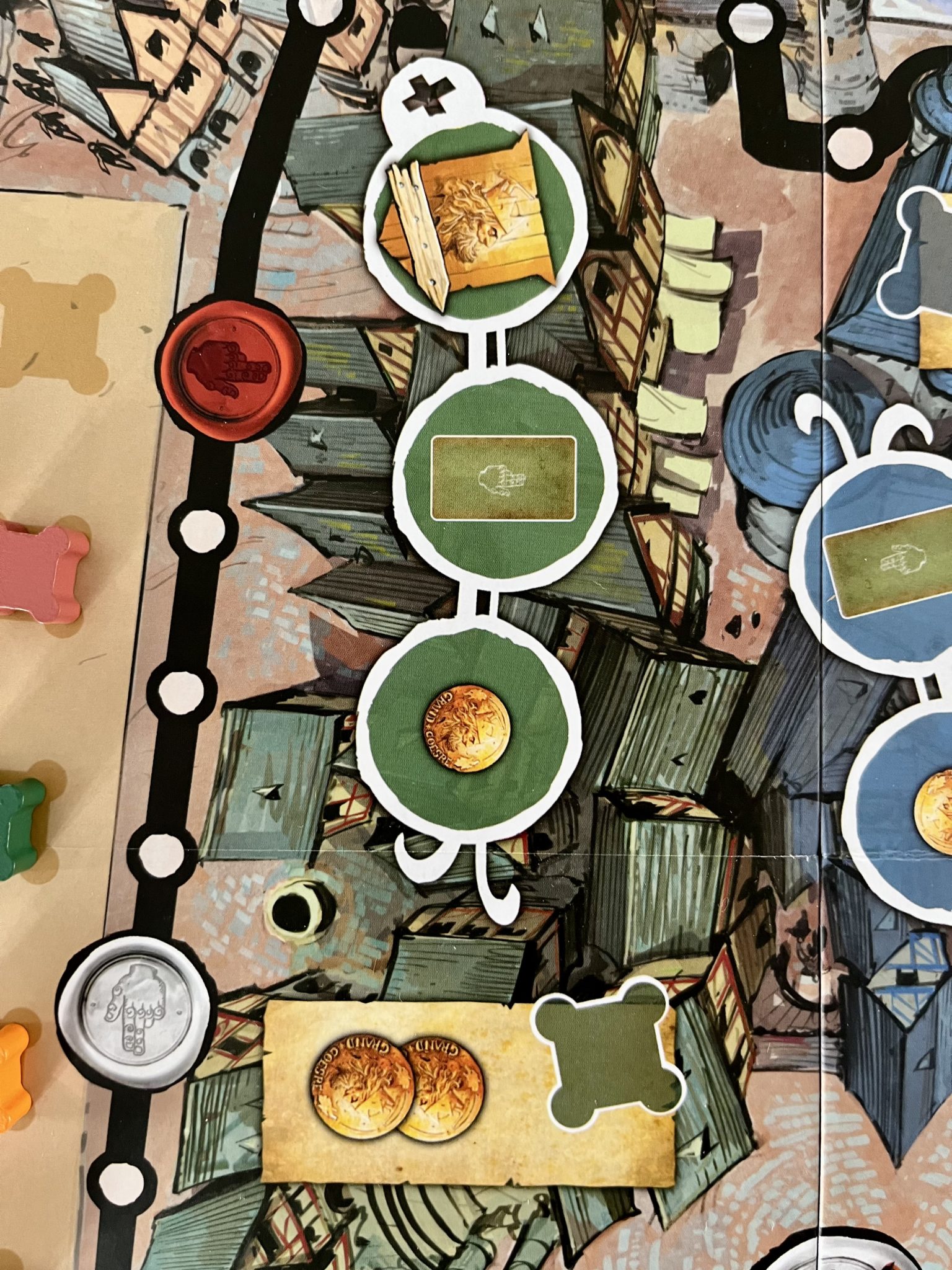
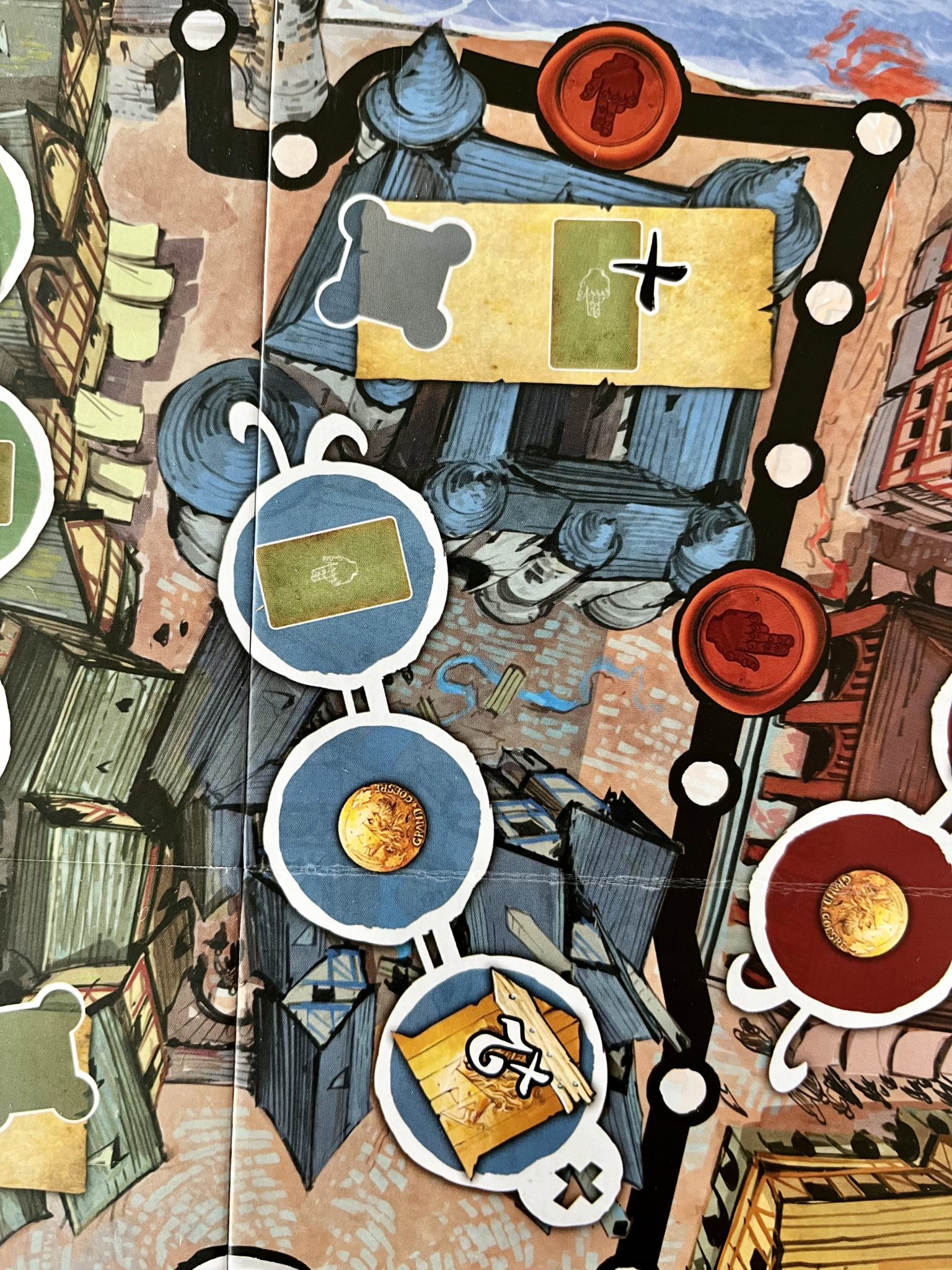
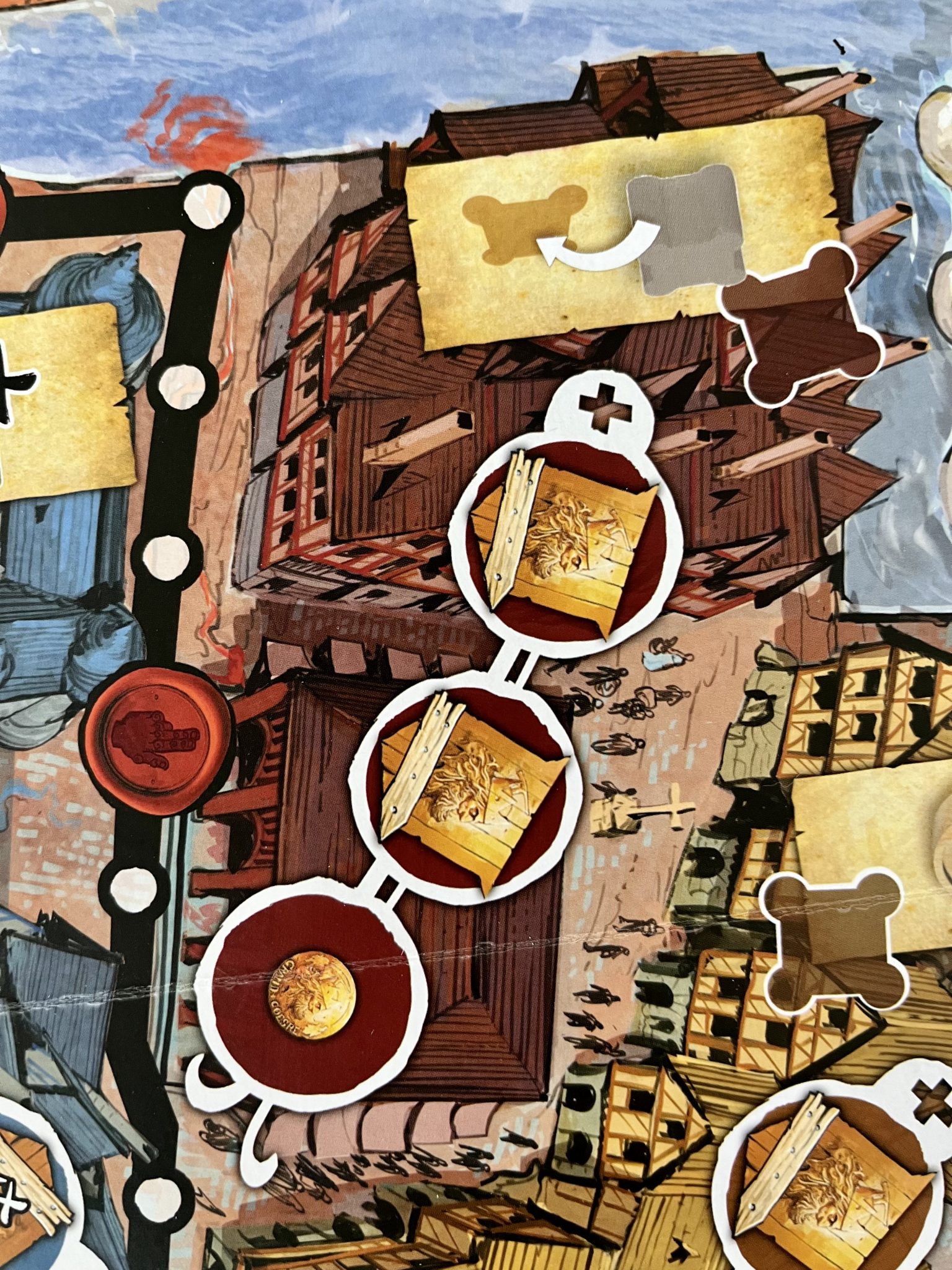
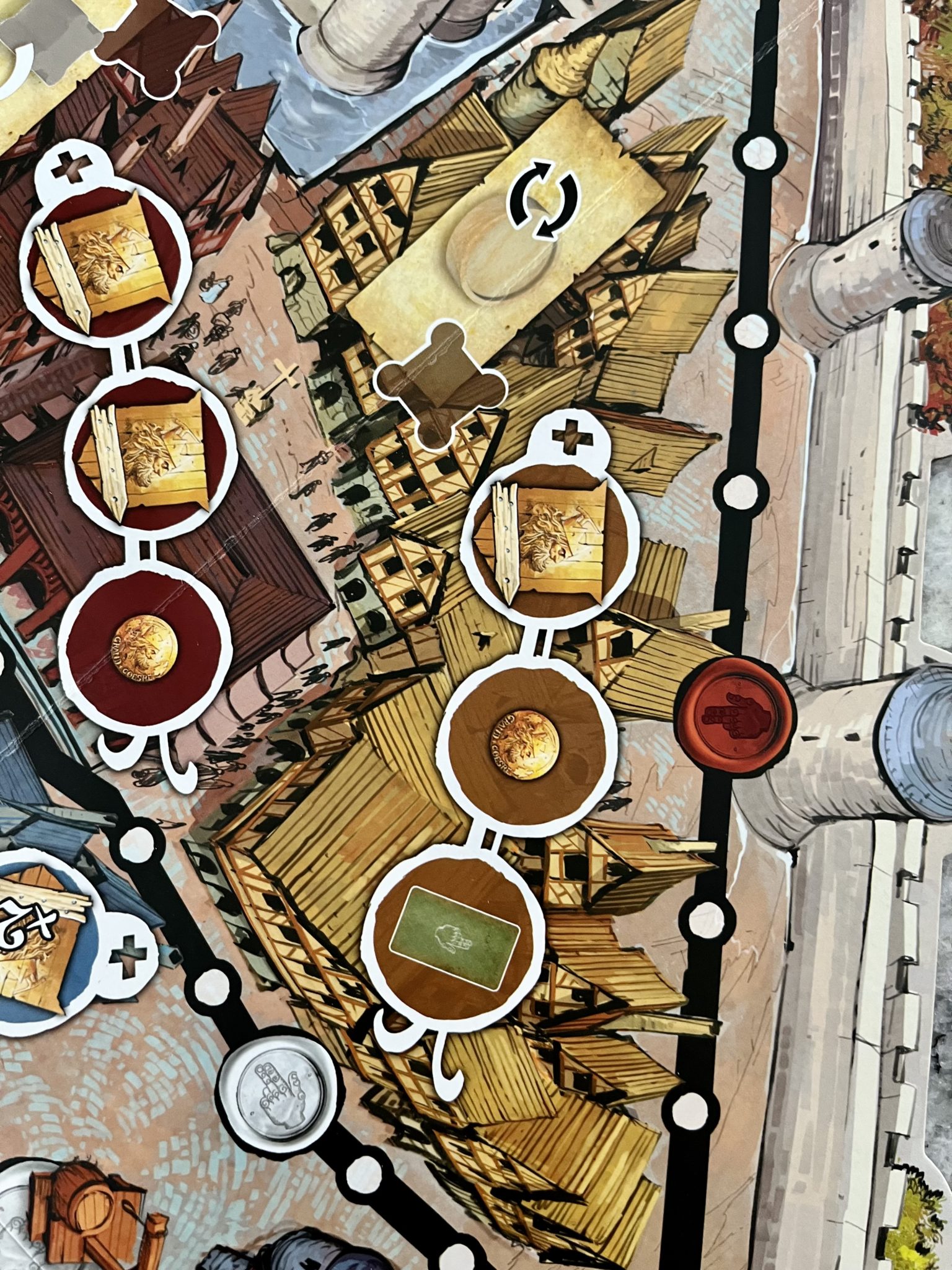
To summarize, the location where you put your rogue token determines both the effect from the specific spot and the effect from the neighborhood.
After applying these effects, players look to see if there are any standoffs on the board. A standoff is when all three spots in a neighborhood are filled up or when the penniless king reaches a wrath space on his path.
If there is a standoff, the players involved reveal their rogue tokens and each player involved will add up their values. The total represents that player’s influence, and the player with the highest influence wins the standoff and takes control of that neighborhood. The winner places one of their renown tokens in the neighborhood to indicate this and all rogue tokens are returned to the players who own them. If another player previously controlled that neighborhood, they get that renown token back.
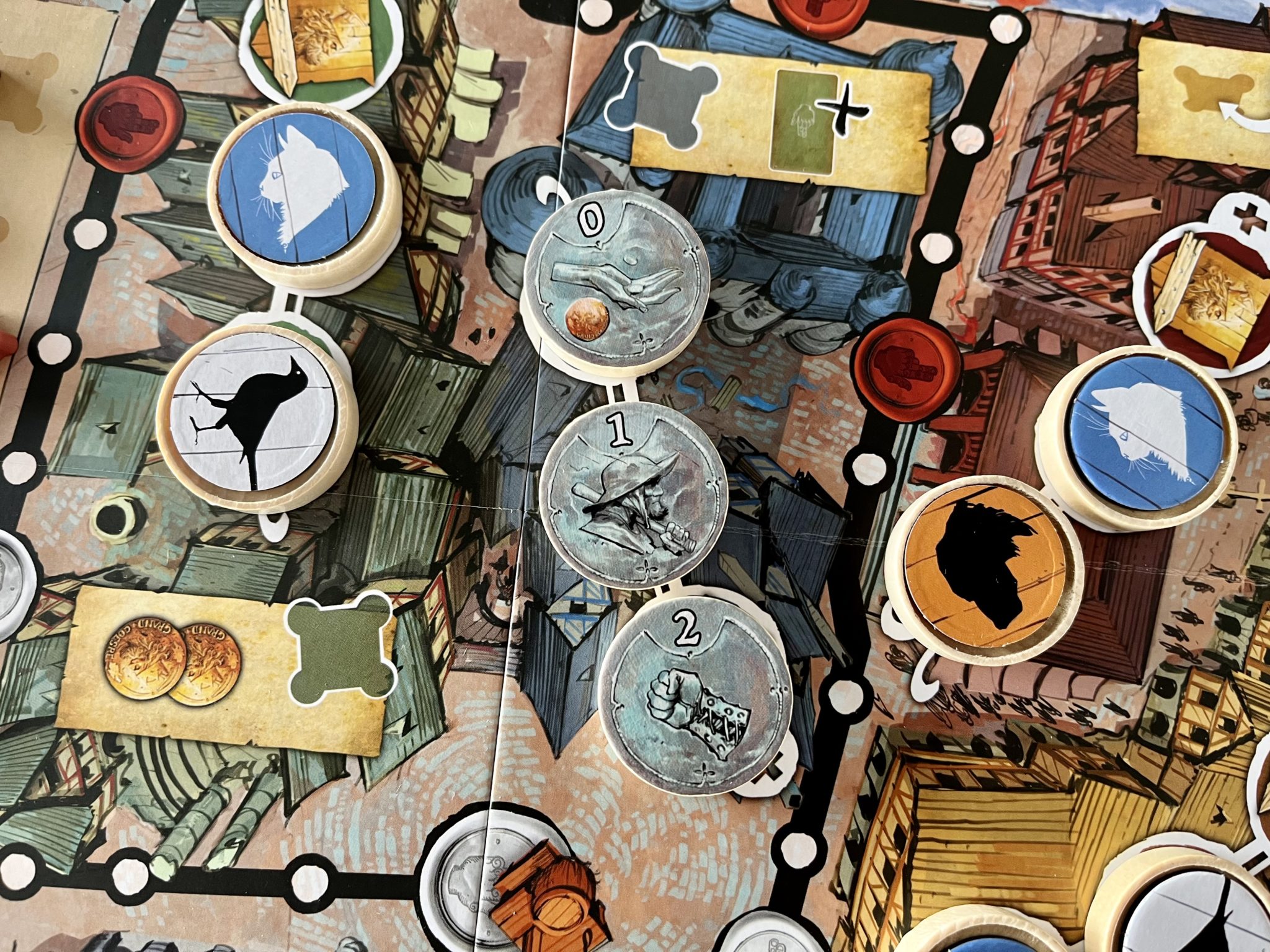
Besides those steps, the active player can choose to play one plot card any time during their turn before beginning to settle the standoffs over neighborhoods. Note: there is a hand limit of 4 plot cards.
The game ends when either a player places their sixth renown token on the board or when the Penniless King reaches its final space on the path. The player who first gets their sixth renown token placed win; if the Penniless King triggers the end of the game, whoever has the most renown tokens placed on the board wins.
The Verdict
This is one of the top deduction bluffing games I’ve played, and it has a little bit more beef on the bones than most other similar games. With so many options to place your rogue tokens, plus the options of selecting so many different actions on your turn, you can really mix things up and try to confuse your opponents.
With time, you can also gain many different rogue tokens, giving you either more power to win neighborhoods or unique abilities that provide an edge to outwit your opponents. Not only do all the possible added rogue tokens make things more complex, just trying to figure out which rogue token from your opponents might be their beggar is a mind game in itself.
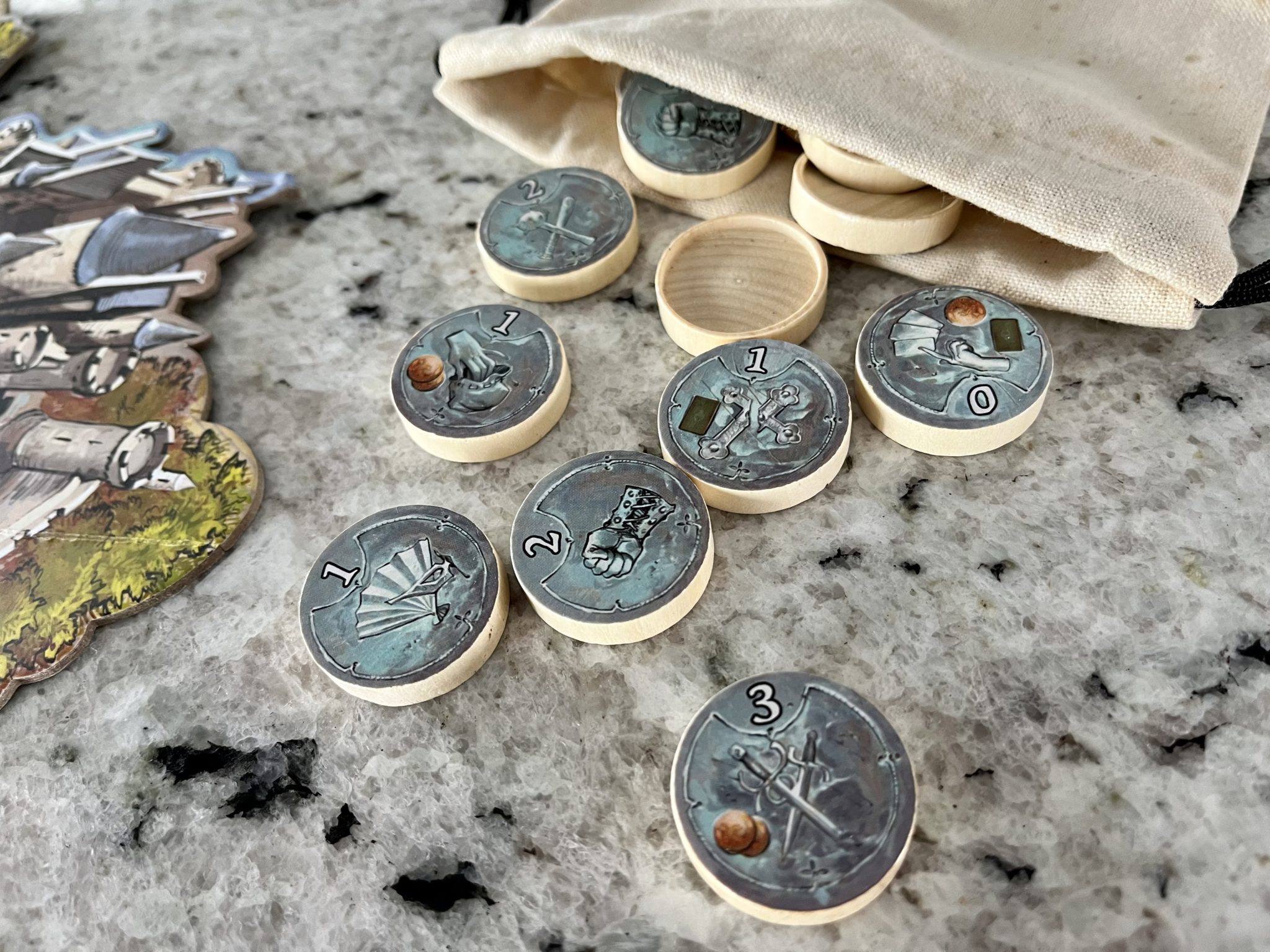
Plot cards also add in some randomness and change things up so the game doesn’t stale out. But these cards can also give you a leg up if you are in the right situation to use them.
Renown Square is an important part to visit, as there you can place renown tokens that can never get returned to you (unlike in neighborhoods). Additionally, you can gain some good bonuses that help to get you to where you want to be.
Players also need to balance using Renown Square and winning neighborhoods to get all their 6 renown tokens on the board to win the game. Using actions to give you a benefit of some sort is important, as everyone else is going to be trying to do what’s best for them and their guild.
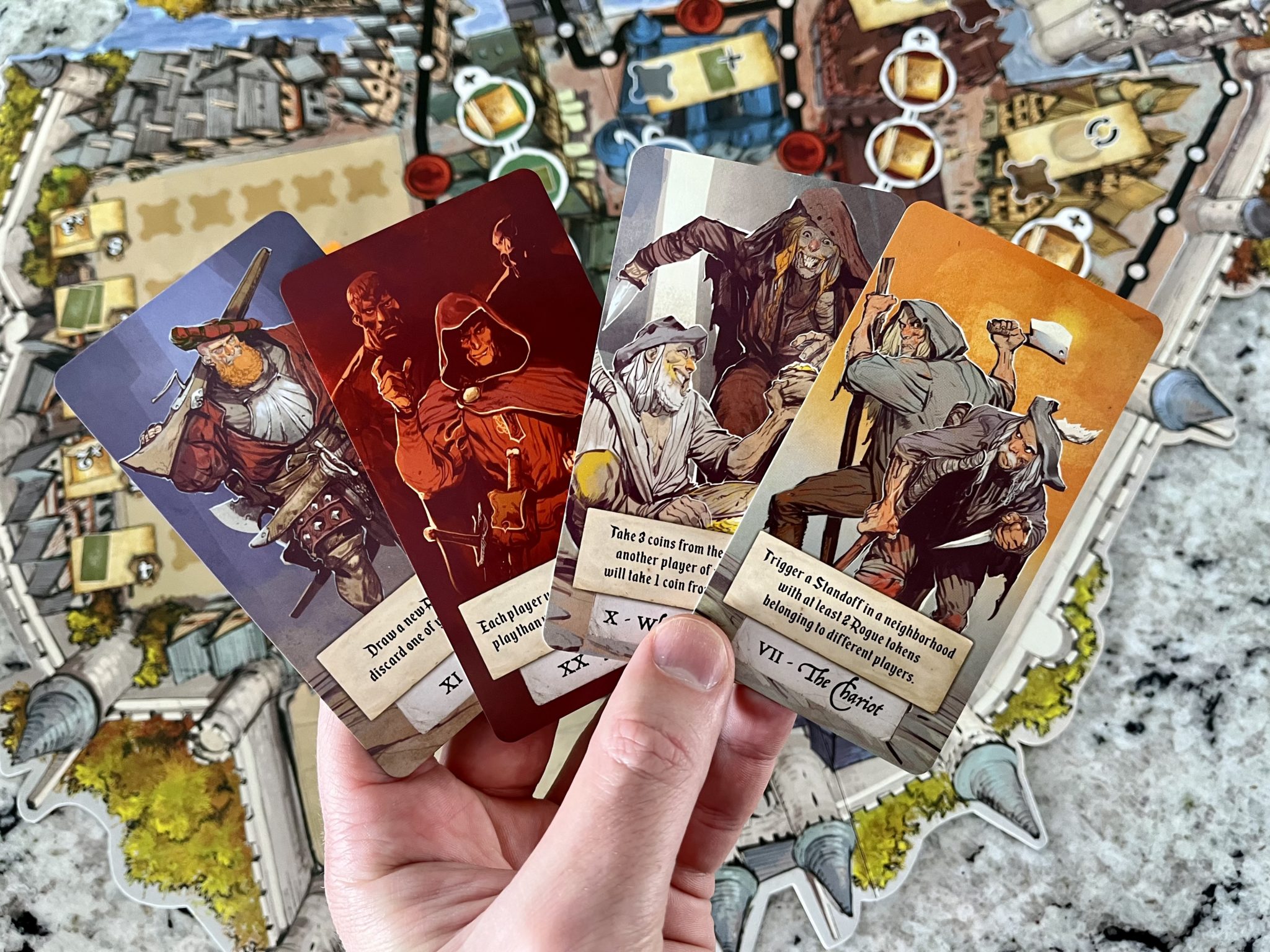
Moreover, players need to interrupt other players when they are getting close to winning the game. To do this, they can retake control of a certain neighborhood to take their renown token off and thus returning it to the. This has the added benefit of placing one of your own on the board, putting them behind and you ahead in one move.
In terms of interest and gameplay, The Court of Miracles does a good job with providing enough to do on your turn, as one move – placing your rogue token – offers you two actions depending on where you place it. With time, you’ll be able to feel like you’re building up something. It also doesn’t take all that much to get a single renown token on the board. Getting all 6, on the other hand, on can be challenging, especially if the other players play well and defend against it. Finally, the Penniless King is a great timer for the game for when players can’t get all 6 of their tokens on the board so that the game doesn’t drag on.
The Court of Miracles has a lot of strategy, but the strategy isn’t complicated. It’s reading your opponents, figuring out their plans, and then making your plans better than theirs. This is not one of those games where you have your own board and stuff and no one can bother you. The Court of Miracles is a game where everyone is paying attention to what everyone is doing, and trying to play the game better than everyone else.
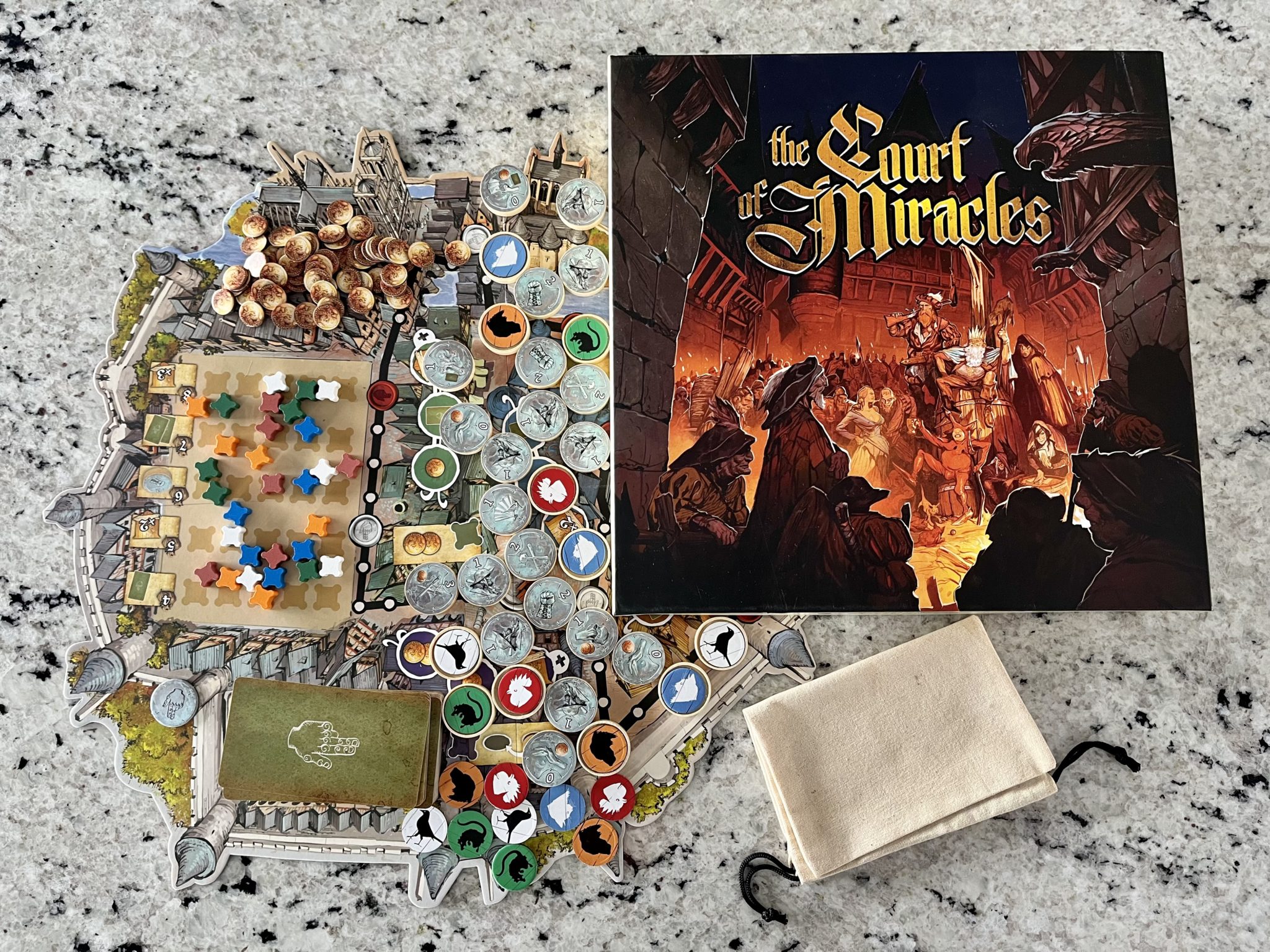
Don’t let all of this dissuade you. The Court of Miracles only appears to have a higher complexity than it really has; the game is actually pretty straight forward. When scanning through the rulebook, you’ll see that the text isn’t lengthy or the rules all that complicated. You can totally handle this game.
You can grab The Court of Miracles at your FLGS
Some Images Courtesy of Lucky Duck Games
Have strong thoughts about this piece you need to share? Or maybe there’s something else on your mind you’re wanting to talk about with fellow Fandomentals? Head on over to our Community server to join in the conversation!

